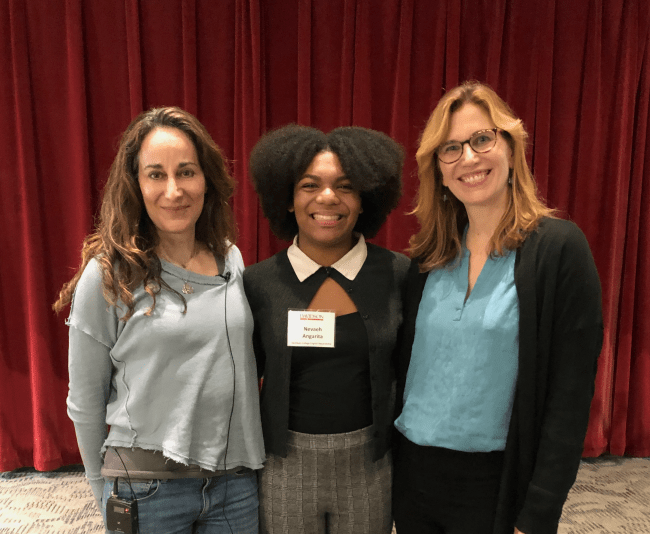Author and educator Molly Sentell Haile ’94 joined screenwriter Laeta Kalogridis ’87 for the 25th Annual Davidson Reads event, hosted by the English Department.
Sentell Haile’s fiction has appeared in Jabberwock Review and Cream City Review and has been nominated for a Pushcart Prize. Her nonfiction has appeared in Oxford American and O. Henry Magazine and has received an honorable mention in The Best American Nonrequired Reading. She teaches creative writing classes for people with cancer, survivors and caregivers at Hirsch Wellness Network in Greensboro. Sentell Haile earned an MFA in creative writing from UNC-Greensboro.
In a conversation with Neveah Angarita ’26, Sentell Haile discussed the writing process and her experience as a creative writing educator.
How do you approach writing fiction compared to nonfiction?
When writing fiction, you have a blank slate, which is its challenge. With nonfiction, you may have all the information in the world about your topic of interest, but you have to select and shape what you will use. Nonfiction often starts for me when I am interested in a question, maybe a question about something that appears contradictory, whereas fiction begins with my interest in a particular kind of person in a specific situation, something that challenges that person’s way of seeing the world.
Which genre do you gravitate toward more?
I like researching for fiction. Fiction based on something historical or factual allows me to research and fill in the gaps. I love the creative space between the facts and what’s going on in a character's head.
Is there a form you feel particularly adept in?
I write short stories predominantly, but flash fiction is the form I’m least adept in. In graduate school, fellow students would tell me I wrote in “novel time” even in my short stories. I’ve been playing around with flash fiction recently because it’s good (and fun) to exercise other writing muscles.
What are the challenges of the short story form for you?
Within the short story form, you can’t waste words or an image. There can’t be anything extra. Everything has to be a part of the momentum leading to the ending. That can be true of novels as well, but there is more room to play around in a novel. Every image doesn’t need to be deeply connected to the entire series of images. A short story has to be airtight. Character, image and setting have to work together like puzzle pieces. A great novel does that as well, but with a little more breathing room.
Why do you write?
I write to try and understand things I don’t understand. I write to create some sort of order or art out of the messiness of life, but also to express the messiness.

Original source can be found here.





 Alerts Sign-up
Alerts Sign-up